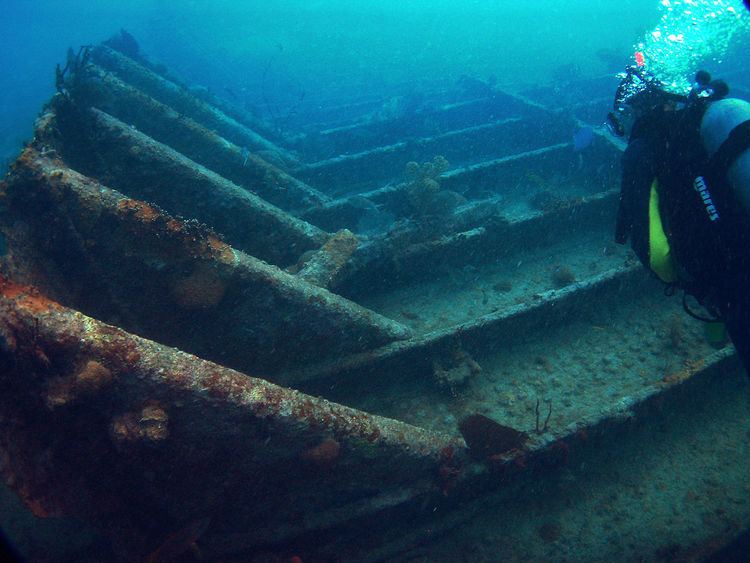Name SS Benwood Type Freighter Launched 1910 Length 110 m Phone +1 305-852-7717 | Out of service April 9th, 1942 Crew 38 Length 110 m Beam 16 m | |
 | ||
Fate Crashed into Robert C. Tuttle Armament 12 rifles, one 4-inch gun, six depth charges and 36 bombs Address Pelagic Sargassum Habitat Restricted Area, Key Largo, FL, USA Similar Molasses Reef, Key Largo, USCGC Duane, Grecian Rocks, North Dry Rocks | ||
Ss benwood dive
The Benwood is a shipwreck off the coast of Key Largo, Florida.
Contents
Ss benwood fish buffet
Wrecking event
The Norwegian merchant freighter Benwood (360'x51') was under the command of Captain Torbjørn Skjelbred on the night of April 9, 1942. She was on a routine voyage from Tampa Bay, Florida to Norfolk, Virginia carrying a load of phosphate rock. That same evening, the Robert C. Tuttle(544'x70') was traveling to Atreco, Texas, under the command of Captain Martin Johansen. Rumors of German U-boats in the area forced the two ships to travel completely blacked out, each keeping the Florida coastal lights three miles abeam(Benwood)and one and a half miles abeam(Robert C. Tuttle). It is reported that at 12:45 a.m. the Robert C. Tuttle sighted a black object ahead of the ship and turned starboard after signaling "I intend to turn starboard." with one blow of the ship's whistle. There was no response from the other ship. At 12:50 a.m., the Benwood reported to have sighted a black object off her starboard. She sounded the ship's whistle twice indicating, "I intend to turn port." There was no response. It is believed that the two ships were now unwittingly on a collision course with each other. Just before the collision, Captain Skjelbred made last-minute efforts to avoid the Robert C. Tuttle by ordering the engine full astern (fastest reverse). Moments later,the bow of the Benwood punched into the Robert C. Tuttle just aft of the port side bow, above the waterline. This caused the bow of the Benwood collapsed upon itself. The Benwood began taking on water at a brisk rate. Captain Skjelbred turned hard for shore, attempting to save the ship by grounding, but some time between 1:10 and 2:00 a.m. was forced to abandon ship. The Benwood came to rest stern-to on a sandy slope in approximately 25 feet (7.6 m) to 45 feet (14 m) of water between Dixie Shoals (to the north) and French Reef (to the south) off of Key Largo, Florida.
After the sinking
On April 10, 1942, the crew of the salvage tug Willet examined the wreck and determined that the keel of the Benwood was broken, and she was a total loss. However, her superstructure and cargo of phosphate rock appear to have been salvaged. Her stern section, once considered a hazard to navigation, seems to have been mostly obliterated by explosions of an unknown type. This salvaging on the ship over the years prompted John Pennekamp Coral Reef State Park to form a protection program in 1959 to prevent further damage to the historical wreckage. Today, the Benwood is a protected resource under the Florida Keys National Marine Sanctuary, which was formed in 1975. Since then, the Benwood site has played host to countless recreational dives, as it is an extremely popular night dive site. Since her sinking, the Benwood has become an artificial reef, providing the only high-profile reef in the immediate vicinity. She lies in 55 feet of sea water with hull plates found in the sand around the perimeter.
